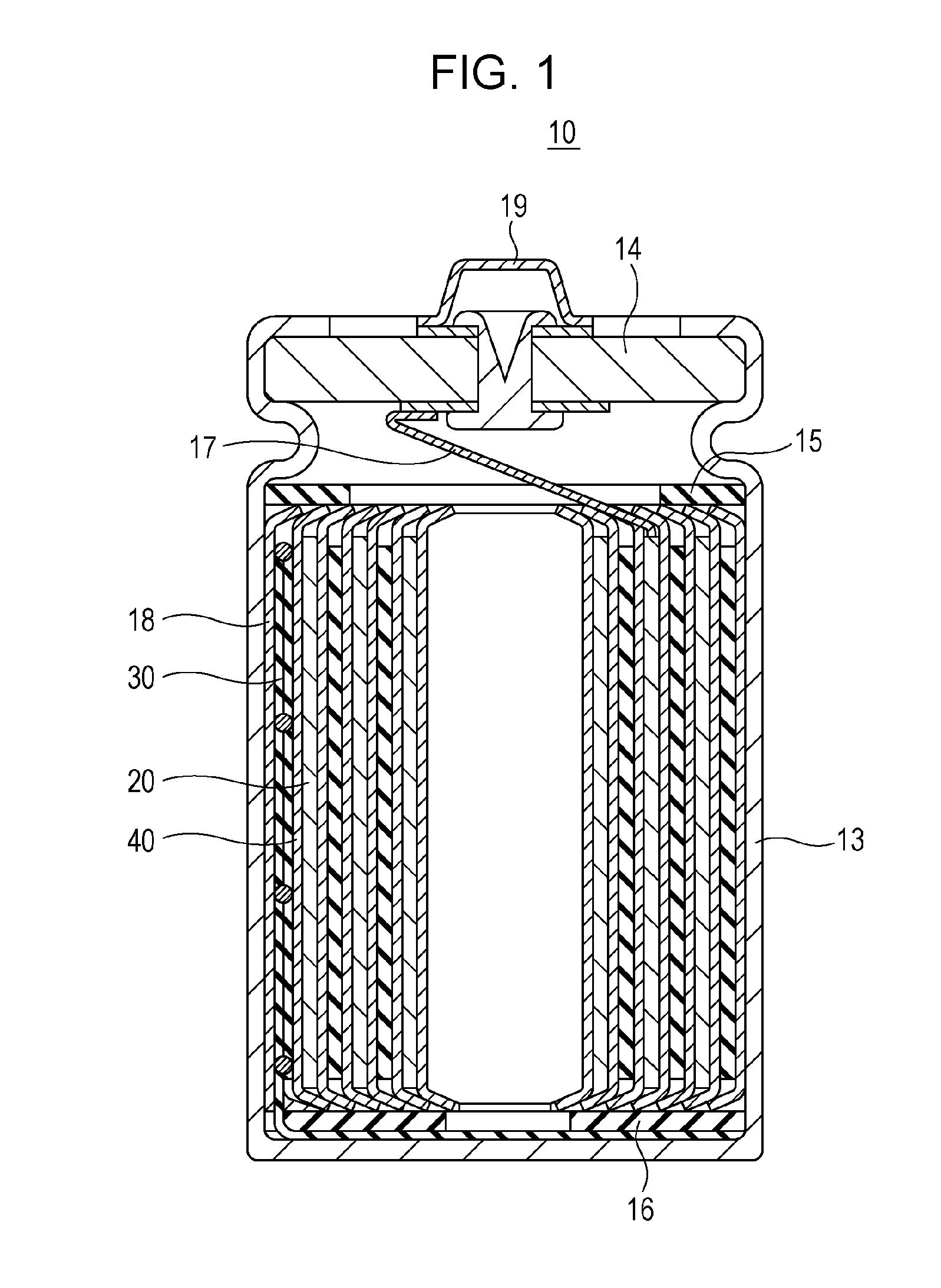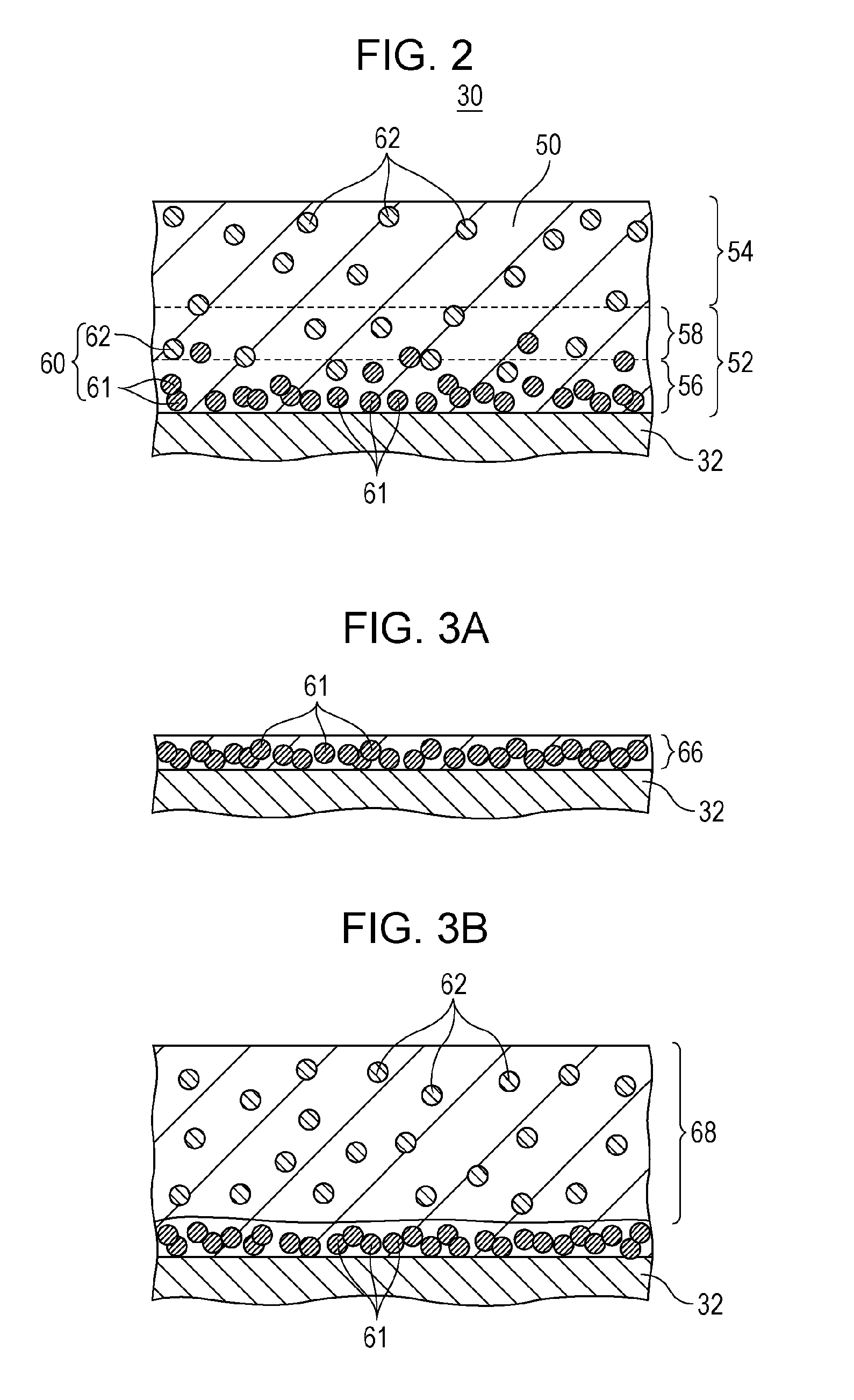Negative electrode plate for nonaqueous electrolyte secondary battery and method of producing the same
- Summary
- Abstract
- Description
- Claims
- Application Information
AI Technical Summary
Benefits of technology
Problems solved by technology
Method used
Image
Examples
example 1
Production of Negative Electrode Plate
[0059]A negative electrode plate was produced as follows. A dispersion (solid content: 10% by mass) of a styrene-butadiene copolymer (SBR) (first binding material) having a Tg of 35° C. was die-coated on one surface of electrolytic copper foil having a thickness of 10 μm serving as a negative electrode collector to form a first application layer (first application step). The laminate composed of the negative electrode collector and the first application layer formed on one surface of the negative electrode was dried with wind in an atmosphere of a temperature of 25° C. to form a first negative electrode mixture layer (first drying step). The dried first negative electrode mixture layer had a thickness of 3 μm. A mixture of 0.6 parts by mass of an SBR (second binding material) having a Tg of −20° C., 100 parts by mass of artificial graphite (negative active material), and 1 part by mass of CMC was added to water to prepare a slurry. This slurry w...
example 2
[0063]A negative electrode plate and a cylindrical battery of Example 2 were produced as in Example 1 except that the slurry used in the second application step was prepared by adding water to a mixture of 0.2 parts by mass of an SBR (second binding material) having a Tg of −20° C., 100 parts by mass of artificial graphite (negative active material), and 1 part by mass of carboxymethyl cellulose (CMC) and that the amount of the second binding material was 0.2% by mass based on the total amount of the negative active material. The negative electrode mixture layer of the negative electrode plate in Example 2 had a thickness of 150 μm.
example 3
[0064]A negative electrode plate and a cylindrical battery of Example 3 were produced as in Example 1 except that the slurry used in the second application step was prepared by adding water to a mixture of 0.05 parts by mass of an SBR (second binding material) having a Tg of −20° C., 100 parts by mass of artificial graphite (negative active material), and 1 part by mass of carboxymethyl cellulose (CMC) and that the amount of the second binding material was 0.05% by mass based on the total amount of the negative active material. The negative electrode mixture layer of the negative electrode plate in Example 3 had a thickness of 150 μm.
PUM
 Login to View More
Login to View More Abstract
Description
Claims
Application Information
 Login to View More
Login to View More - R&D
- Intellectual Property
- Life Sciences
- Materials
- Tech Scout
- Unparalleled Data Quality
- Higher Quality Content
- 60% Fewer Hallucinations
Browse by: Latest US Patents, China's latest patents, Technical Efficacy Thesaurus, Application Domain, Technology Topic, Popular Technical Reports.
© 2025 PatSnap. All rights reserved.Legal|Privacy policy|Modern Slavery Act Transparency Statement|Sitemap|About US| Contact US: help@patsnap.com



